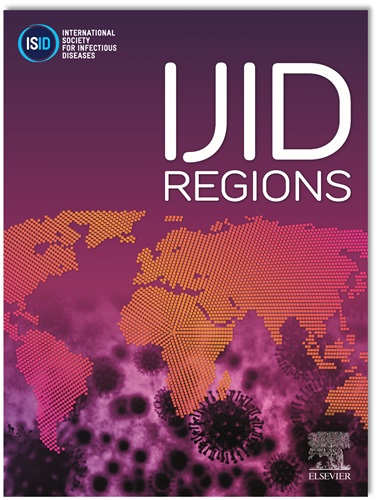Preschool age participation in mass drug administration: Analyzing the impact on community-wide schistosomiasis control
IF 4.3
2区 医学
Q1 INFECTIOUS DISEASES
引用次数: 0
Abstract
Objectives
Schistosome infection in childhood is common and can lead to morbidity. A formulation of praziquantel to treat preschool-aged children (PSAC) has been developed recently. This paper assesses the impact of including PSAC in mass drug administration (MDA) on transmission and morbidity at a community-wide level.
Methods
We used a model of schistosome transmission to simulate the probability of a community reaching elimination as a public health problem (EPHP) and the reduction in morbidity of children resulting from infections until the age of 5 years, measured by a “worm years” metric as a score of morbidity.
Results
Including PSAC in MDA will almost always lead to a reduction in morbidity. However, it does not necessarily result in a substantial increase in the probability of EPHP. The proportion of schistosome infections in each age group is a key factor in determining the effectiveness of MDA programs, which prioritize different age groups for treatment.
Conclusions
Policymakers should be aware that including PSAC in MDA may not help to reach the World Health Organization target of EPHP. However, a reduction in the average summed worm infection burden at the age children typically start attending school is highly desirable in increasing the long-term benefit of MDA in early childhood.
学龄前儿童参与大规模用药:分析对社区血吸虫病控制的影响。
背景:儿童期血吸虫感染很常见,可导致发病。吡喹酮治疗学龄前儿童(PSAC)的配方最近被开发出来。本文评估了将PSAC纳入大规模给药(MDA)可能对社区范围内的传播和发病率产生的影响。方法:我们利用一个血吸虫传播模型来模拟一个社区作为公共卫生问题(epp)达到消除的概率,以及由感染引起的儿童发病率的降低,以“虫年”指标作为发病率的分数来衡量。结果:在MDA中加入PSAC几乎总能降低发病率。然而,它并不一定导致epp的概率大幅增加。每个年龄组中血吸虫感染的比例是决定MDA规划有效性的关键因素,该规划优先考虑不同年龄组的治疗。结论:决策者应该意识到,将PSAC纳入MDA可能无助于实现WHO epp的目标。然而,在儿童通常开始上学的年龄减少平均总蠕虫感染负担是非常可取的,可以增加幼儿期大规模预防注射的长期效益。
本文章由计算机程序翻译,如有差异,请以英文原文为准。
求助全文
约1分钟内获得全文
求助全文
来源期刊
CiteScore
18.90
自引率
2.40%
发文量
1020
审稿时长
30 days
期刊介绍:
International Journal of Infectious Diseases (IJID)
Publisher: International Society for Infectious Diseases
Publication Frequency: Monthly
Type: Peer-reviewed, Open Access
Scope:
Publishes original clinical and laboratory-based research.
Reports clinical trials, reviews, and some case reports.
Focuses on epidemiology, clinical diagnosis, treatment, and control of infectious diseases.
Emphasizes diseases common in under-resourced countries.

 求助内容:
求助内容: 应助结果提醒方式:
应助结果提醒方式:


